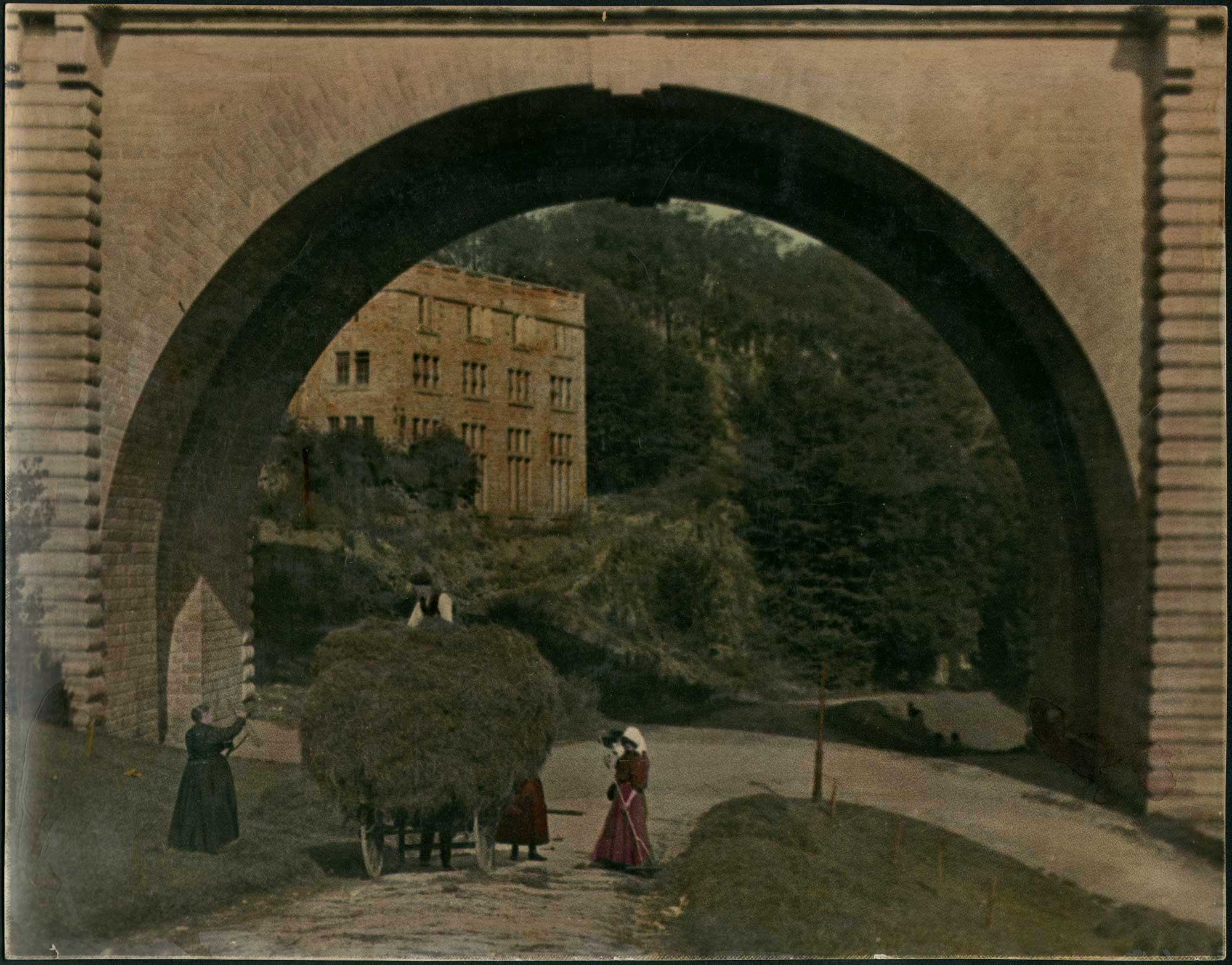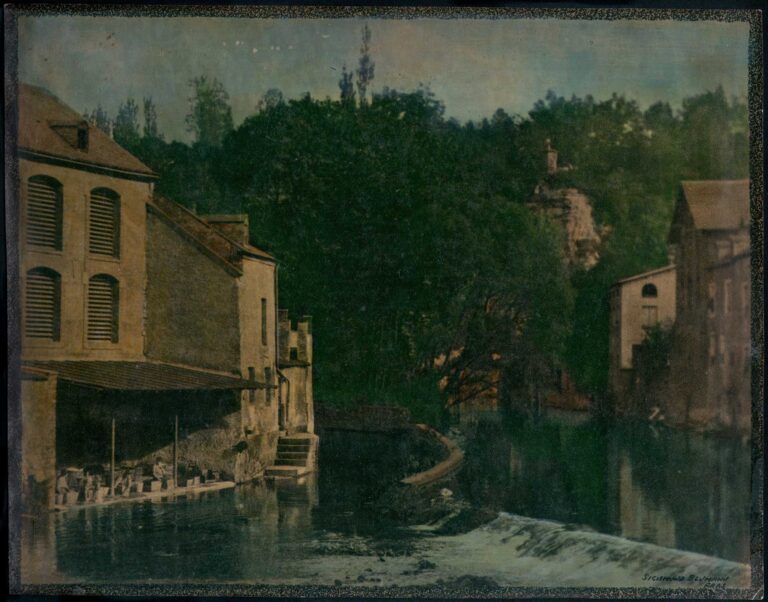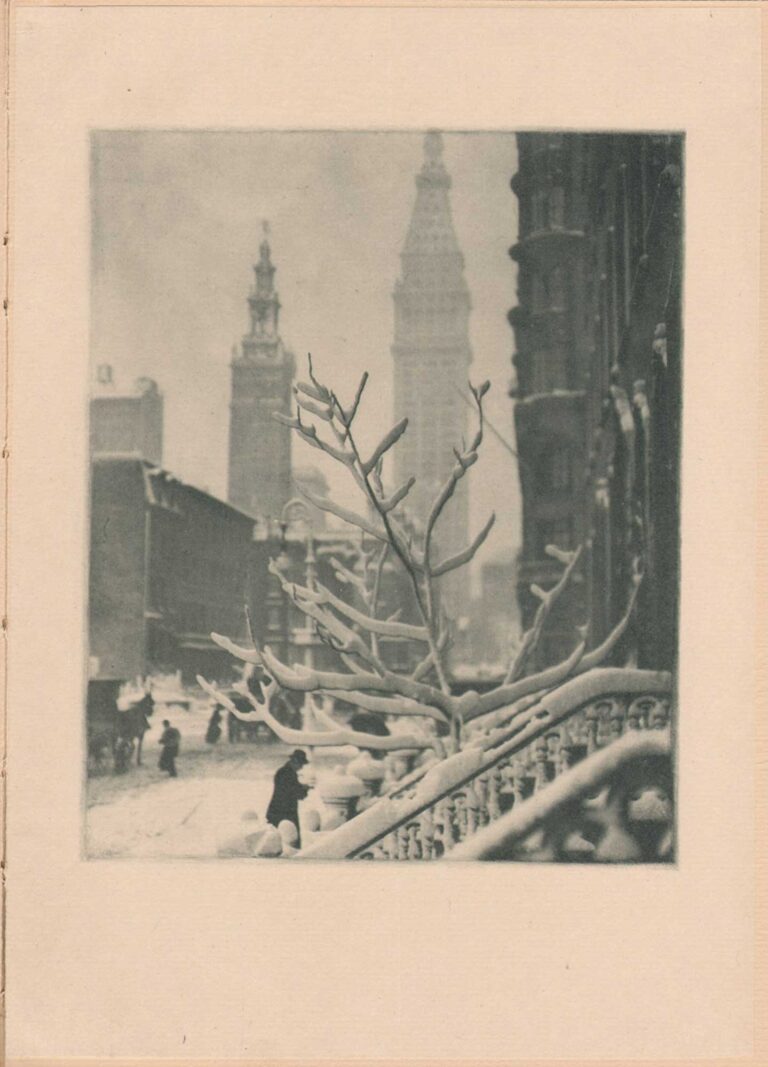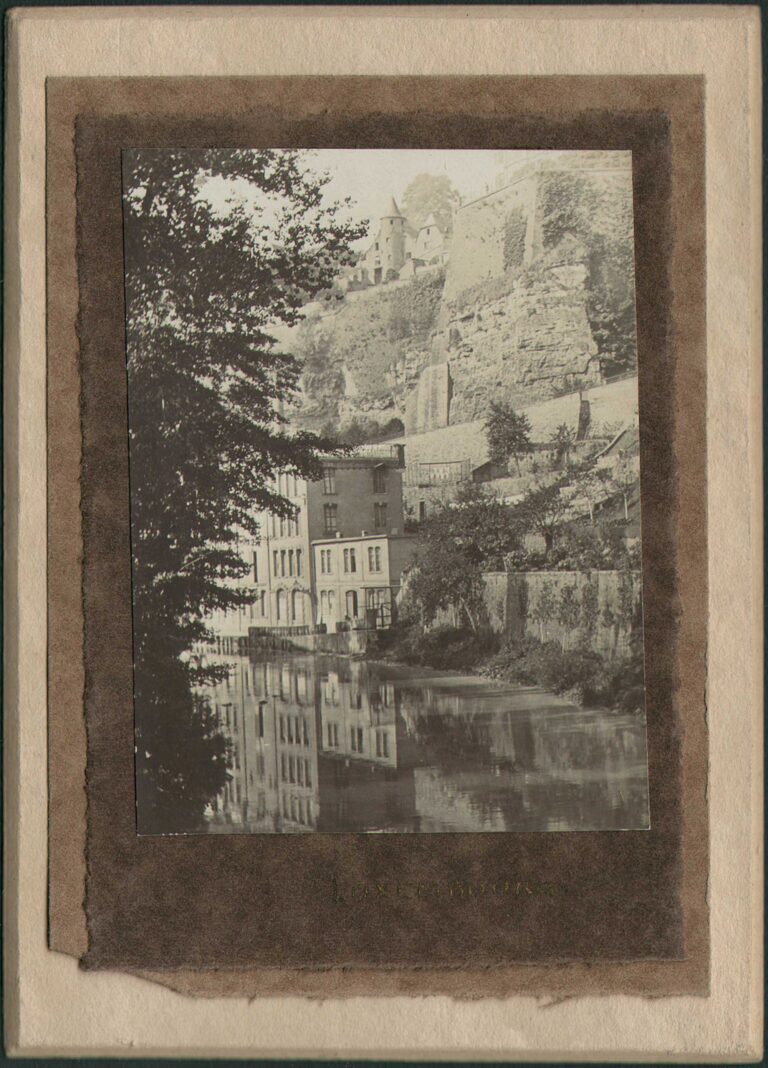
Adolphe Bridge in Luxembourg
Although not signed, this is a newly discovered view of Luxembourg’s Adolphe Bridge taken by Jacques Tillmany only ten years after the massive structure was built, around 1913. Looking through one of the side archways (21.60 meters) flanking the central arch, a group of farm workers load up a large hay cart. This is believed to be a general view of the archway seen today. (corrections or insight are solicited) The building seen at the left through the archway is located next to the present day Place de la Constitution, and may be part of this important complex. Visitors can look out from the top level and take in the expansive views of the Pétrusse Valley and Adolphe Bridge.
Adolphe Bridge, Luxembourg
The Adolphe Bridge has become an unofficial national symbol of sorts, representing Luxembourg’s independence, and has become one of Luxembourg City’s main tourist attractions. The bridge was designed by Paul Séjourné, a Frenchman, and Albert Rodange, a Luxembourger, and was built between 1900 and 1903. Its design was copied in the construction of Walnut Lane Bridge in Philadelphia, the United States. – Wikipedia (2024)
The photograph was worked up into this hand-colored lithobrome print, probably in the late 1920s, by Tillmany’s good friend Sigismund Blumann.
Born in Luxembourg in 1884, professional musician and amateur photographer Jacques Tillmany (1884-1966) became interested in photography next to fellow musician Sigismund Blumann in the San Francisco Bay area in the early 20th century. In 1907, the two went into business on a part-time basis offering in-home photographic portraiture. (1.) Similar photographs by Tillmany of his native Luxembourg appeared in the August, 1913 issue of Camera Craft written by his friend Blumann for the article titled Luxembourg, A Photographic Paradise. An Excerpt:
Mr. Tillmany, whose pictures of Luxembourg are worthy of a master’s brush, modestly insists that the camera, not he, deserves all credit for the results. Over a dozen films were exposed each time he went out, each one resulting in a picture well worth a print except as an occasional one was spoiled through error in exposure or failing to wind the key. He found his greatest difficulty in keeping the expenditure for films down to a reasonable. figure, the subjects being so plentiful and inviting. To say that one can take pictures two hundred days in a year, and take several dozens a day, working within a radius of a few miles, will perhaps give some adequate idea of the possibilities of this photographic gold-mine, beautiful Luxembourg. p. 368
1. Sigismund Blumann, California Editor and Photographer: in: History of Photography: Vol. 26, No. 1 Spring, 2002: “About the time he moved to Oakland, in 1907, Blumann became a part-time portrait photographer, as a sideline to his musical career. He joined with Jacques Tillmany, a fellow musician, to offer home portraiture, a line of portrait photography popularized by such advanced East-Coast workers as Clarence H. White.” p. 54. From the editor: Census and newspaper accounts show Tillmany lived in the Bay area in the early 20th Century but waited until 1952 when petitioning for US Immigration in listing his arrival in New York on the SS Lapland on Feb. 20, 1911. (Family Search, May, 2024)



